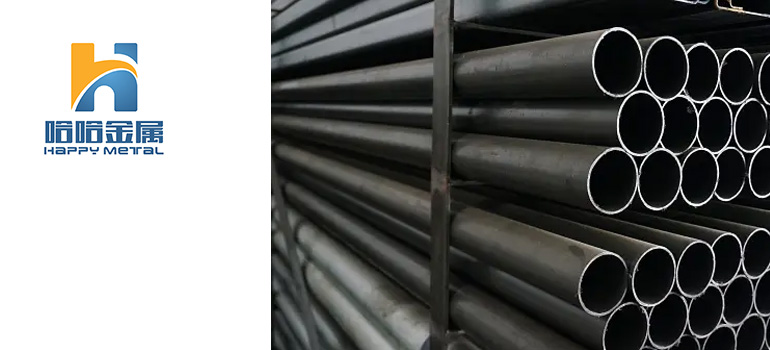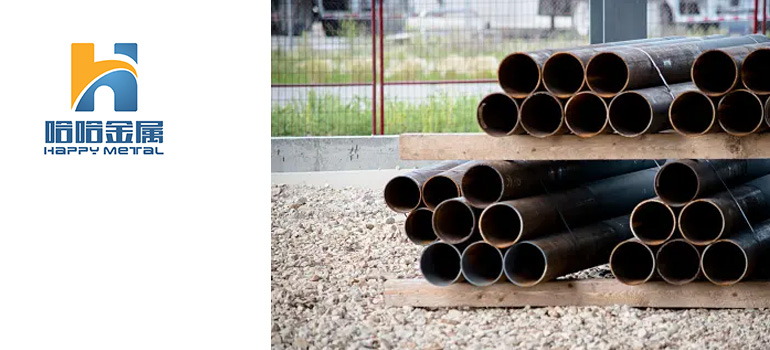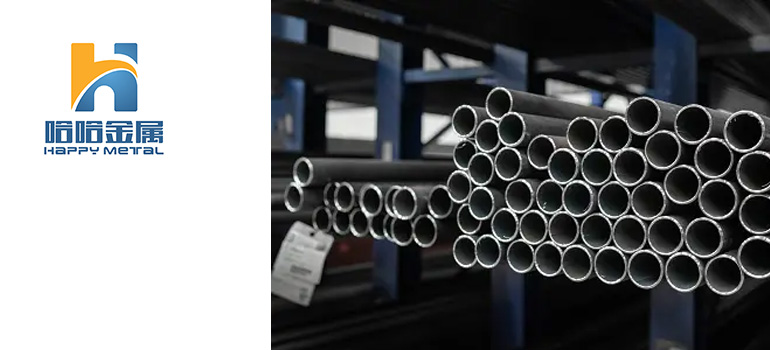Summary:
The Ultimate Guide to Precision Carbon Steel Pipe Welding Methods
What is Carbon Steel Pipe Welding?
Essential Tools and Equipment
Techniques for Precision Carbon Steel Pipe Welding
Common Challenges and Solutions
Best Practices for Optimal Results
In today’s fields of construction, manufacturing, and infrastructure, carbon steel pipe welding is a crucial skill. From high-rise buildings to transportation pipelines, carbon steel pipes are widely used and are highly favored for their durability and cost-effectiveness. However, to ensure the quality and safety of these pipelines, exquisite welding techniques are required.
In this section, we will delve into the importance of carbon steel pipe welding, understand the basic knowledge of carbon steel, and why suitable welding techniques are crucial. Meanwhile, we will provide an overview of the welding process of carbon steel pipes, laying the foundation for subsequent discussions.
What is Carbon Steel Pipe Welding?

Carbon steel pipe welding refers to the process of joining together sections of carbon steel pipes through the application of heat, pressure, or a combination of both. Carbon steel pipes are widely used in various industries such as construction, manufacturing, and infrastructure due to their strength, durability, and cost-effectiveness.
The welding of carbon steel pipes involves several techniques, including Shielded Metal Arc Welding (SMAW), Gas Tungsten Arc Welding (GTAW), Flux-Cored Arc Welding (FCAW), and others. These techniques vary in terms of the equipment used, the welding process, and the specific application requirements.
The purpose of carbon steel pipe welding is to create strong, leak-proof joints between pipe sections, ensuring the integrity and reliability of the piping system. Proper welding techniques are essential to maintain the structural integrity of the pipes, prevent leaks, and ensure the safety of the overall infrastructure.
Overall, carbon steel pipe welding plays a crucial role in various industries by enabling the fabrication of durable and reliable piping systems that can withstand the rigors of everyday use and harsh environmental conditions.
Essential Tools and Equipment
When it comes to carbon steel pipe welding, having the right tools and equipment is essential to ensure the quality and integrity of the welds. Here are some of the essential tools and equipment used in carbon steel pipe welding:
Welding Machine: A welding machine, also known as a welder or welding power source, is the primary equipment used to generate the heat necessary for welding. Different welding processes require different types of welding machines, such as Stick welders for Shielded Metal Arc Welding (SMAW) or TIG welders for Gas Tungsten Arc Welding (GTAW).
Welding Electrodes or Filler Metals: Welding electrodes or filler metals are used to fill the joint between the carbon steel pipes during the welding process. These electrodes or filler metals are typically made of compatible materials and are selected based on the specific welding process and the properties required for the weld.
Welding Helmets and Protective Gear: Welding helmets, gloves, aprons, and other protective gear are essential for the safety of welders during the welding process. These protective gear items protect welders from sparks, heat, radiation, and other hazards associated with welding.
Welding Clamps and Fixtures: Welding clamps and fixtures are used to hold the carbon steel pipes in place during the welding process, ensuring proper alignment and preventing movement or distortion of the pipes. These clamps and fixtures come in various shapes and sizes to accommodate different pipe diameters and configurations.
Grinding and Cutting Tools: Grinding and cutting tools, such as angle grinders, plasma cutters, and cutting torches, are used to prepare the joints and remove any unwanted material or defects from the surface of the carbon steel pipes before welding. Proper preparation of the joints is crucial for achieving high-quality welds.
Inspection Tools: Inspection tools, such as welding gauges, calipers, and ultrasonic testing equipment, are used to inspect the quality of the welds and ensure compliance with welding standards and specifications. These inspection tools help identify any defects or discontinuities in the welds that may compromise the integrity of the piping system.
Having the right tools and equipment not only ensures the safety of welders but also contributes to the quality and efficiency of the carbon steel pipe welding process. Investing in high-quality tools and equipment and providing proper training to welders is essential for achieving successful welding outcomes.
Techniques for Precision Carbon Steel Pipe Welding
Precision carbon steel pipe welding requires careful consideration of various techniques to ensure strong and reliable joints. Here are some key techniques used in precision carbon steel pipe welding:
Preparation and Cleaning: Before welding, it’s crucial to prepare the surfaces of the carbon steel pipes by removing any contaminants, such as oil, grease, or rust. This can be done using wire brushes, grinding tools, or chemical cleaners. Clean surfaces promote better weld penetration and reduce the likelihood of defects.
Joint Design: The design of the joint plays a significant role in the quality of the weld. Common joint designs for carbon steel pipe welding include butt joints, lap joints, and fillet joints. The choice of joint design depends on factors such as the thickness of the pipes, the welding process used, and the application requirements.
Welding Processes: There are several welding processes suitable for carbon steel pipe welding, each with its advantages and limitations. These include:
Shielded Metal Arc Welding (SMAW): Also known as stick welding, SMAW is a versatile and widely used welding process suitable for carbon steel pipe welding in various positions.
Gas Tungsten Arc Welding (GTAW): GTAW, or TIG welding, offers high-quality welds with precise control over heat input. It’s suitable for thin-walled pipes and critical applications.
Flux-Cored Arc Welding (FCAW): FCAW is a semi-automatic process that uses a tubular electrode with flux to shield the weld pool. It’s efficient for welding thick carbon steel pipes in outdoor or windy conditions.
Welding Parameters: Proper adjustment of welding parameters, such as current, voltage, travel speed, and shielding gas flow rate, is essential for achieving quality welds. Welding parameters depend on factors such as pipe thickness, welding position, and the welding process used. Maintaining consistent parameters throughout the welding process helps ensure uniformity and strength in the welds.
Joint Fit-Up and Alignment: Achieving proper fit-up and alignment of the pipe joints is critical for producing high-quality welds. Tight tolerances minimize gaps between the pipe ends, promoting full penetration and fusion of the weld metal. Techniques such as tack welding and clamping can help ensure accurate alignment during welding.
Post-Weld Treatment: After welding, it’s essential to inspect the welds for defects and perform any necessary post-weld treatments, such as grinding or surface cleaning. This helps remove any weld spatter, smooth out rough surfaces, and improve the appearance and integrity of the welds.
By applying these precision welding techniques, welders can produce strong, durable, and defect-free joints in carbon steel pipes, meeting the quality standards and requirements of various industries.
Common Challenges and Solutions

Precision carbon steel pipe welding can present various challenges, but with the right techniques and solutions, these challenges can be effectively addressed. Here are some common challenges encountered during carbon steel pipe welding and their corresponding solutions:
Welding Defects: Welding defects such as porosity, lack of fusion, and cracks can compromise the integrity of the weld and the overall piping system. These defects may occur due to improper welding techniques, inadequate joint preparation, or poor welding parameters.
Solution: Implementing proper welding procedures, ensuring thorough joint cleaning and preparation, and optimizing welding parameters can help minimize welding defects. Additionally, regular inspection and quality control measures can detect defects early, allowing for timely corrective actions.
Distortion and Warping: During welding, heat input can cause distortion and warping of the carbon steel pipes, leading to misalignment and dimensional inaccuracies. This distortion can be particularly problematic in thin-walled pipes or when welding complex geometries.
Solution: Employing proper welding techniques, such as tack welding and sequential welding, can help distribute heat more evenly and reduce distortion. Using clamps or fixtures to hold the pipes in place during welding can also help maintain alignment and minimize warping.
Joint Preparation and Fit-Up: Inaccurate joint preparation and fit-up can result in gaps or misalignment between the pipe sections, affecting the quality of the weld. Poor joint preparation can also lead to incomplete penetration and inadequate fusion.
Solution: Prioritize proper joint preparation, including beveling or chamfering the pipe ends to ensure a smooth transition and adequate root penetration. Use precision measurement tools to achieve tight tolerances and accurate fit-up, minimizing gaps and ensuring full weld coverage.
Contamination and Shielding Gas Issues: Contamination from moisture, oil, or debris on the surface of the pipes, as well as inadequate shielding gas coverage, can lead to weld defects such as porosity and oxidation.
Solution: Thoroughly clean the pipe surfaces before welding to remove any contaminants that could affect weld quality. Use proper shielding gas flow rates and distribution systems to ensure adequate coverage and protection of the weld pool from atmospheric contamination.
Heat-Affected Zone (HAZ) Concerns: Excessive heat input during welding can result in a wide heat-affected zone (HAZ) with undesirable metallurgical changes, such as grain growth and reduced toughness.
Solution: Optimize welding parameters to minimize heat input while maintaining sufficient penetration and fusion. Employ techniques such as preheating or post-weld heat treatment to control HAZ microstructure and improve weld properties.
By addressing these common challenges with appropriate techniques and solutions, welders can achieve high-quality, precise welds in carbon steel pipes, ensuring the integrity and reliability of the piping system.
Best Practices for Optimal Results
To ensure optimal results in precision carbon steel pipe welding, it’s essential to follow best practices throughout the welding process. Here are some key best practices to consider:
Pre-Welding Preparation and Planning:
Thoroughly clean the surfaces of the carbon steel pipes to remove any contaminants, such as oil, grease, or rust, that could affect weld quality.
Properly prepare the joint geometry, including beveling or chamfering the pipe ends, to facilitate full penetration and fusion.
Develop a welding procedure specification (WPS) based on the specific requirements of the project, including welding processes, parameters, and inspection criteria.
Joint Fit-Up and Alignment:
Ensure accurate alignment and tight fit-up of the pipe joints to minimize gaps and ensure proper weld penetration.
Use clamps, fixtures, or tack welds to hold the pipes in position during welding, maintaining alignment and preventing distortion.
Welding Techniques and Parameters:
Select the appropriate welding process based on factors such as pipe thickness, material type, and application requirements.
Optimize welding parameters, including current, voltage, travel speed, and shielding gas flow rate, to achieve consistent weld quality and penetration.
Maintain a stable arc and proper electrode or filler metal manipulation techniques to ensure uniform deposition and fusion.
Quality Control and Inspection:
Implement regular inspection and quality control measures throughout the welding process to detect defects early and ensure compliance with welding standards and specifications.
Use non-destructive testing (NDT) techniques, such as ultrasonic testing or radiographic inspection, to assess weld quality and integrity.
Conduct visual inspections of the welds before, during, and after welding to identify any defects or discontinuities that may require corrective action.
Post-Weld Treatment and Documentation:
Perform any necessary post-weld treatments, such as grinding or surface cleaning, to remove weld spatter, smooth out rough surfaces, and improve the appearance and integrity of the welds.
Document all welding parameters, procedures, and inspection results for traceability and future reference.
Conduct post-weld heat treatment (PWHT) if required to relieve residual stresses and improve the mechanical properties of the weldment.
Continuous Improvement and Training:
Encourage ongoing training and professional development for welders to stay updated on the latest welding techniques, technologies, and best practices.
Establish a culture of continuous improvement, where feedback from welders and inspectors is used to identify areas for enhancement and refinement in the welding process.
By adhering to these best practices, welders can achieve optimal results in precision carbon steel pipe welding, producing high-quality welds that meet the highest standards of performance, reliability, and safety.




